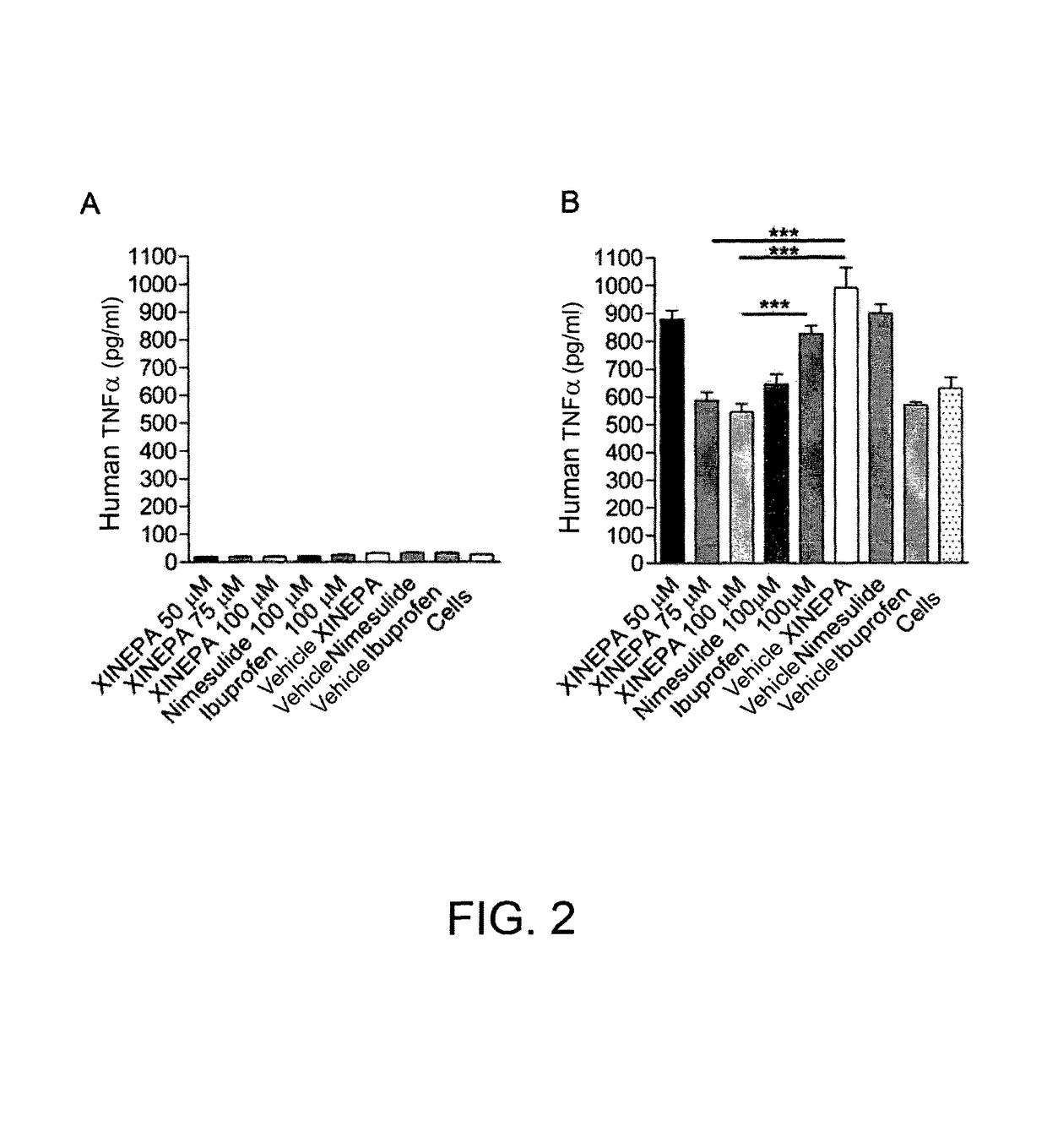Composition for the treatment of neuropathies and/or neuropathic pain
a neuropathology and/or neuropathic pain technology, applied in the field of composition, can solve problems such as pathological neuropathies, achieve the effects of restoring the physiological activity of insulin itself, promoting and directing axonal growth, and improving the production of ng
- Summary
- Abstract
- Description
- Claims
- Application Information
AI Technical Summary
Benefits of technology
Problems solved by technology
Method used
Image
Examples
formulation example — 1.08
Formulation Example—1.08 g Tablet
[0069]
TABLE 1N-acetyl-carnitine400mgAlpha-lipoic acid300mgCurcuma longa dry extract150mgof which curcuma142.95mgVitamin C125mgVitamin E9mgVitamin B1 (thiamine)6.25mgVitamin B2 (riboflavin)6.25mgVitamin B6 (pyridoxine)2.38mgVitamin B12 (cyanocobalamin)6.25mg
[0070]The recommended dose is one or two tablets daily.
example 1
n of Anti-Inflammatory Activity and Quantification of Oxidative Stress
[0071]Rationale
[0072]The composition of the invention has, as pathological target, neuropathic pain from trauma or from an inflammatory effect. Neuropathic pain is a chronic condition caused by lesions or dysfunctions of the somatosensory nervous system. Damage to a peripheral nerve may cause amplification of the response, as a result of painful stimuli applied peripherally, at the level of the first synapse of the nociceptive pathway, causing neuronal hyperactivity at spinal cord level. The non-neuronal cells have a key role in the molecular mechanisms of neuropathic pain. In particular, as a result of damage of a peripheral nerve, alteration of the “blood-spinal cord barrier” (BSCB) may be observed, with consequent infiltration of macrophages and T-lymphocytes. These cells of the peripheral immune system, together with astrocytes and microglial cells, secrete pro-inflammatory cytokines and chemokines causing sen...
example 2
the Anti-Free-Radical Synergy Between the Components of a Dietary Supplement in Cell Cultures of Human Monocytes (THP-1)
[0119]The purpose of the assay is to evaluate the antioxidant activity of the individual components of the dietary supplement Xinepa and the synergy between them, by measuring its capacity for neutralizing the reactive oxygen species (ROS) in a cell line of human monocytes (THP-1). To identify the non-cytotoxic concentrations of the product in question, a colorimetric assay (MTT assay) was used as a preliminary test.
[0120]Table 2 below shows the composition of the product used in the assay in question.
[0121]
TABLE 2mg / doseSubstance(one tablet)Curcuma150.00Lipoic acid300.00Vitamin C125.00Vitamin E acetate9.00N-Acetyl-L-carnitine400.00Vitamin B16.25Vitamin B26.25Vitamin B66.25Vitamin B126.25
[0122]The individual components tested for investigating synergy are shown below:[0123]COMPONENT A: curcuma [0124]COMPONENT B: lipoic acid, vitamin C, vitamin E acetate[0125]COMPON...
PUM
| Property | Measurement | Unit |
|---|---|---|
| emission peak | aaaaa | aaaaa |
| emission peak | aaaaa | aaaaa |
| volume | aaaaa | aaaaa |
Abstract
Description
Claims
Application Information
 Login to View More
Login to View More - R&D
- Intellectual Property
- Life Sciences
- Materials
- Tech Scout
- Unparalleled Data Quality
- Higher Quality Content
- 60% Fewer Hallucinations
Browse by: Latest US Patents, China's latest patents, Technical Efficacy Thesaurus, Application Domain, Technology Topic, Popular Technical Reports.
© 2025 PatSnap. All rights reserved.Legal|Privacy policy|Modern Slavery Act Transparency Statement|Sitemap|About US| Contact US: help@patsnap.com



